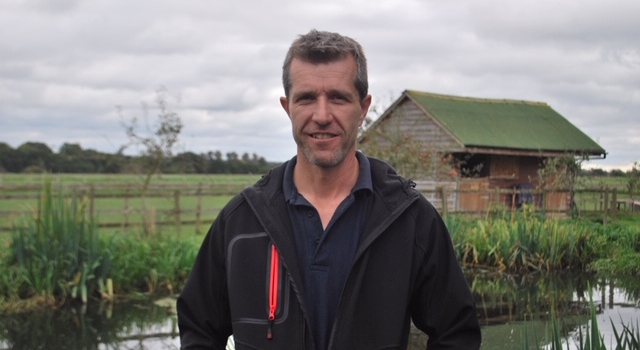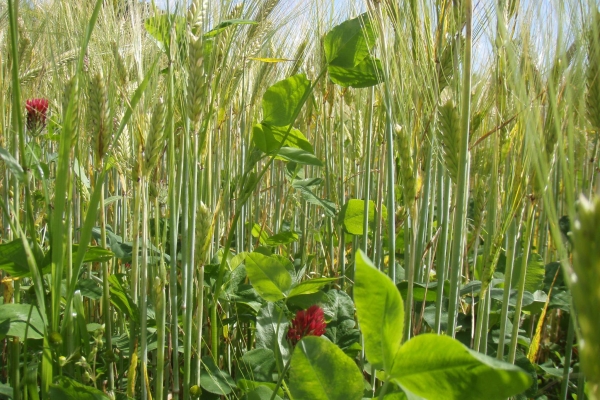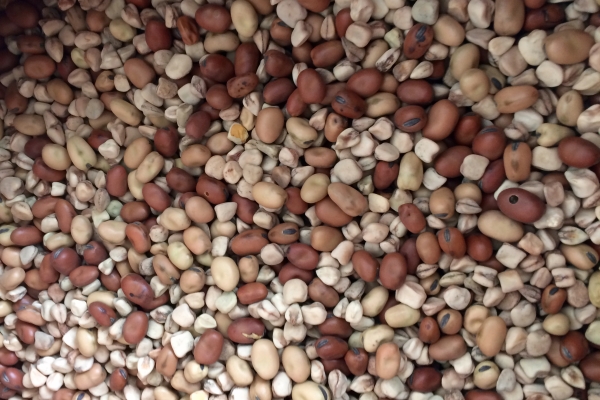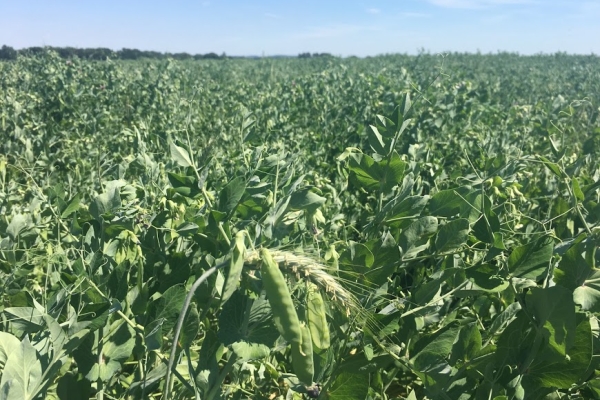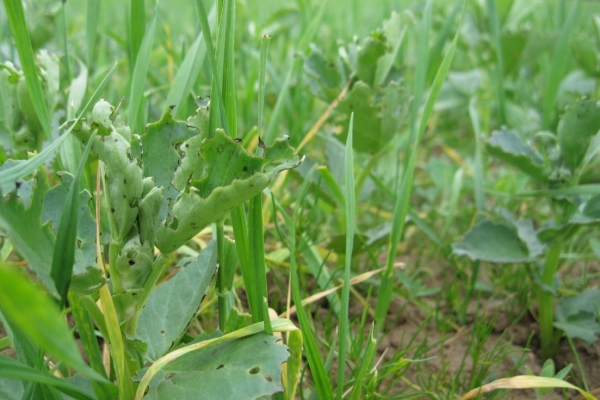Mark Lea
Green Acres Farm
Green Acres is an organic mixed arable and sheep farm that my wife Liz and I have been farming organically since 2000. We are certified organic with OF&G. The farm has generally been in a five-year rotation including clover based leys for silage or grazing, wheat, oats and peas, but this is changing with trials ongoing into direct drilling crops into clover living mulch understories. A small Hereford suckler herd was sold in 2021 leaving around 250 New Zealand Romney ewes. They are managed deliberately to compliment the arable side of the business.
Our experiences with the impacts of Covid (particularly with difficulties experienced during the first lock-down in spring 2020) led us to make some changes and stop two major components of the farm business – the beef cattle and our composting operation. We had run a composting site on the farm for over 20 years, receiving green waste and then producing compost. Covid highlighted, as it did for many people in many businesses, how reliant we were on staff, and when staff were unavailable for whatever reason, we were the ones who were responsible, and I particularly was left feeling overwhelmed with work. The cows were a big and personal responsibility which reluctantly we had to change. There were a number of reasons for this, two of them being the difficulty of running a small extensive herd profitably alongside the ongoing challenge of TB. Compost created a lot of work on the farm which became a problem, it became time to close the site and refocus our attention on our core farming business. We are increasingly diverse and the ending of the compost business and reducing our application of it has really made me focus on trying harder with improving all those other aspects of our management which are good for soil. We’re continuing to explore ways to reduce heavy cultivations and improve our carbon, reducing our carbon impact.
The sheep enterprise is run as an informal partnership with another farmer who provides specialist knowledge and equipment as necessary, similar to a share farming arrangement.
We always enjoy engaging people with the farm. We have a classroom providing a base for on-farm education and are connecting more and more with people who eat the food we produce.
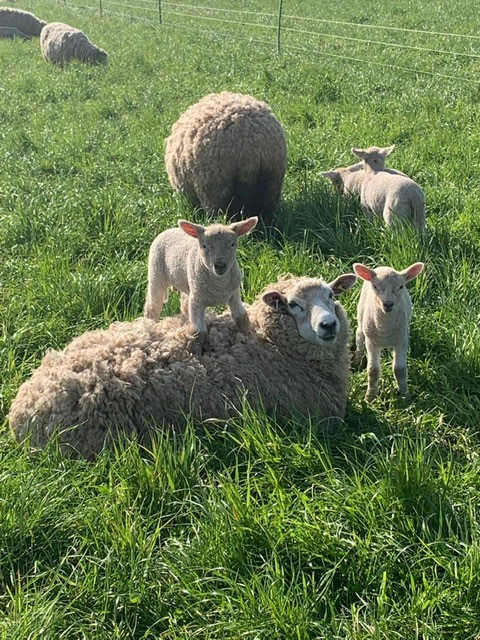


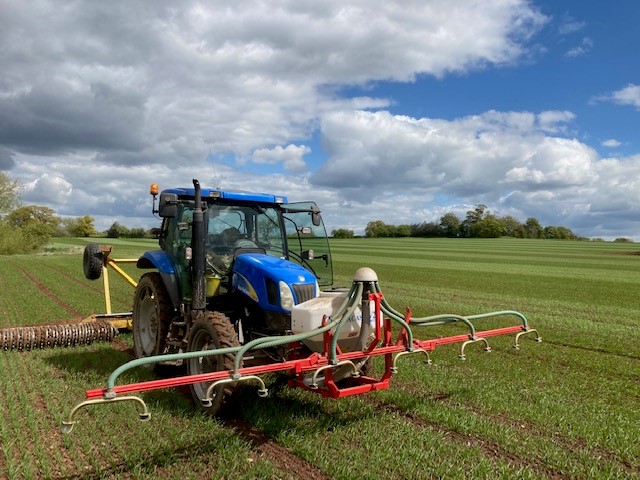
Sustainability in practice
Diversity in practice
Diversity is the key to everything here and we are always looking at ways to increase it across all aspects of the farm.
In our genes…
Having begun a switch away from wheat monocultures with the ORC Wakelyns Population (a highly heterogeneous winter wheat made from 190 crosses of 20 different varieties) back in 2016, we now grow over 20 different varieties of wheat, many of them heritage, twentieth century or unconventional in some other way. The taller landraces and populations are particularly at home in our organic system with fantastic weed suppression and their improved scavenging ability for nutrients and water. An eleven-way mixture of many of the more modern milling wheats of my lifetime is a favourite, in part because it is unique to the farm.
During the Covid pandemic a small French stone-mill was set up with the aim of milling a small proportion of the grain to allow direct sale to local people. This has been really effective and has helped further engagement with the community and more opportunities to demonstrate the way the farm works. The large majority of the wheat continues to be sold direct to millers and bakers all over the UK with whom we have an excellent relationship.
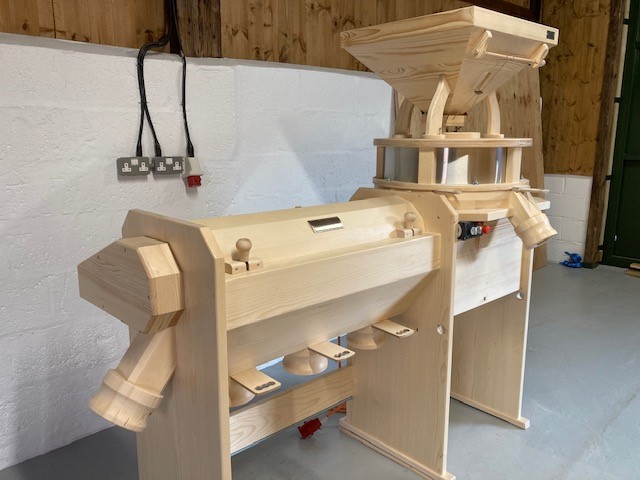
As well as all the unusual wheats we are delighted to be working with Organic Arable along with a group of other growers as part of the LiveWheat Legacy and LiveOat projects. Both these trials assess varieties grown in strips under standard farm conditions for their suitability for organic systems. Results from these annual trials are analysed by Organic Arable and used to inform future cropping decisions. In the case of LiveOat, the trial is partnered by Whites Oats, the destination for all the oats – the largest crop grown here.
The heritage varieties and populations we grow have a lot of potential in a low input sustainable farming system. Weed suppression can be fantastic, they are good at scavenging nutrients, and they could hold resilience to pest and climatic variability which we have lost in modern bred varieties.
Crop diversity
I am also keen to enhance diversity at a crop level – both over time by diversifying the rotation and in space through practices such as undersowing and intercropping / companion cropping.
We have been undersowing since the farm became organic – usually when crops are about 8 -10 cm at tillering (early May). We follow the harrow with a Techneat air seeder, followed by the rolls.
Carlin peas (see below) are grown for Hodmedods (supplier of UK grown seeds, grains and pulses) and marketed as ‘Black Badgers’, a pea traditionally eaten on bonfire night around the UK. They have a lot of biomass and often end up on the floor, affecting yield and quality, so I was interested in it as a cereal to provide some scaffolding.
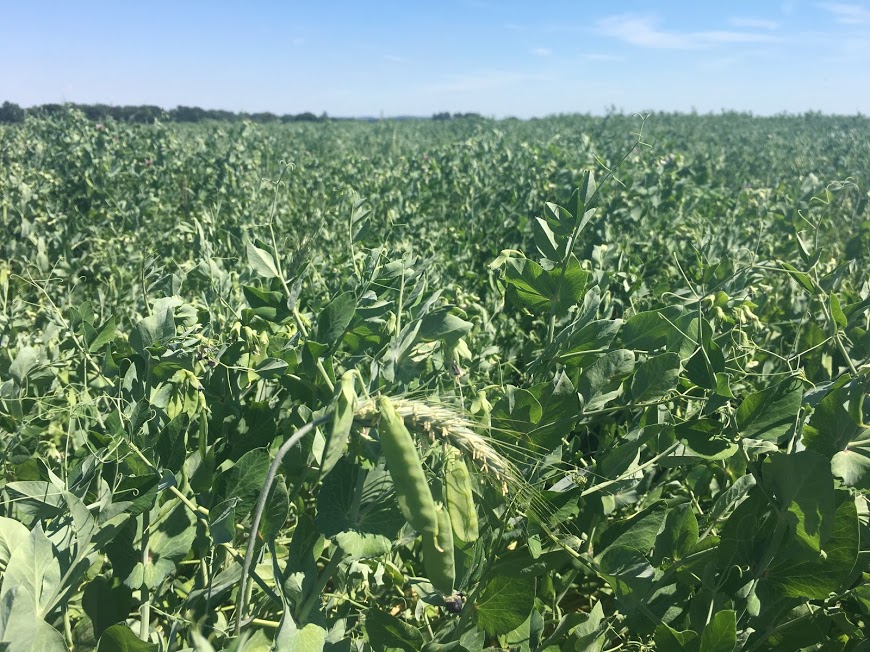
We have been involved in a DIVERSify / Innovative Farmers Field Lab, where we did an intercrop trial with different seed rates of triticale (0%, 5%, 10%, 20% and 30%RD) in full rate carlin peas (240kg/ha) in 1 ha strips across the field to see what the impact would be on lodging. Visual assessment at harvest suggested that 20% and 30% were doing the best job at holding the crop off the floor (although the thistles were also helping in the 0%!) and the 30% was definitely the easiest to harvest. However, analysis of the yield showed no significant difference between the treatments. This was a low lodging year and there was not a large amount of loss in any of the treatments. If we were to do it again, I think I would go for the higher rates. You can see more about these trials in this video.
The images below show 5%, 10%, 20%, and 30% triticale rate and combining the 30% triticale rate
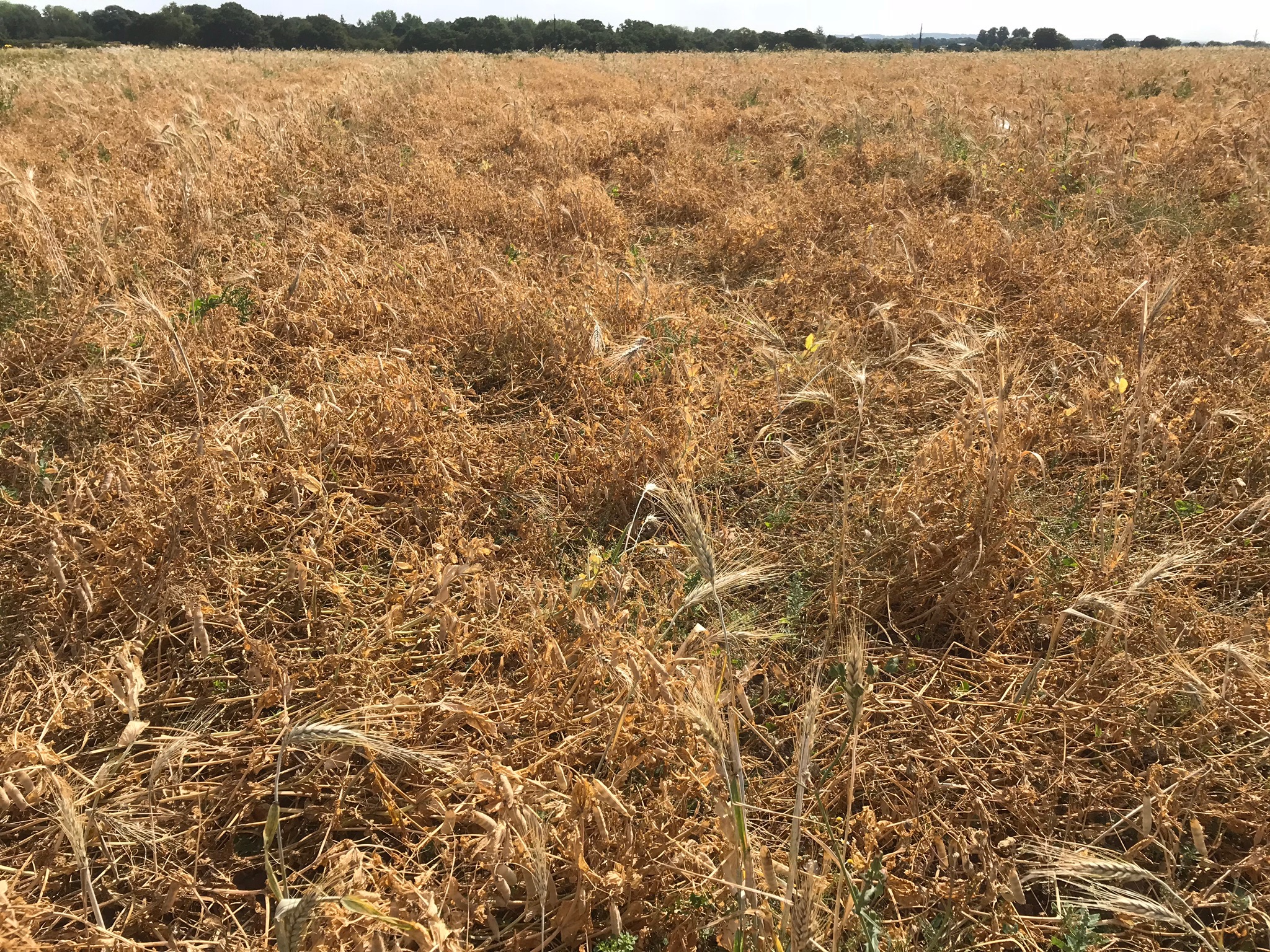
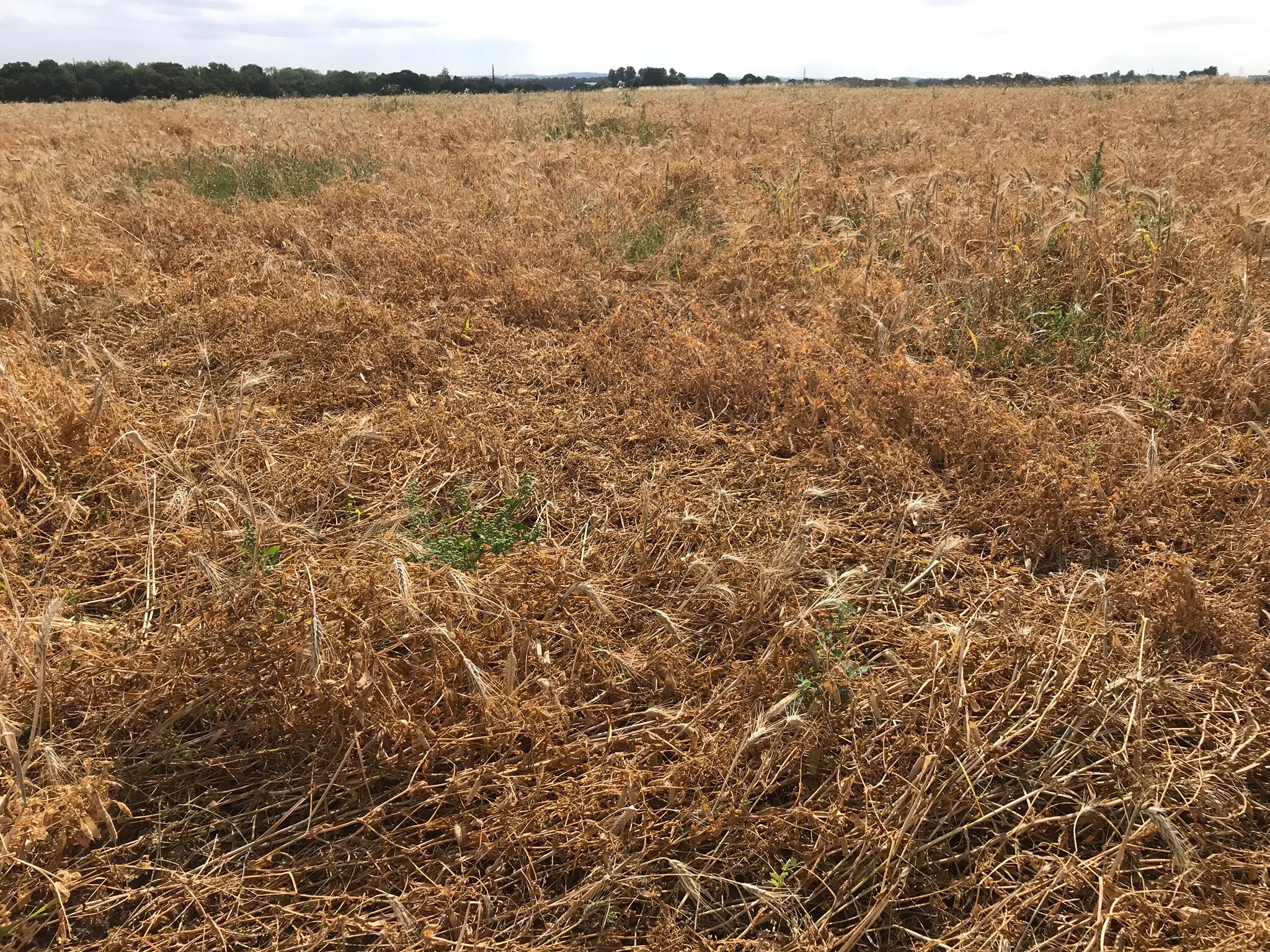
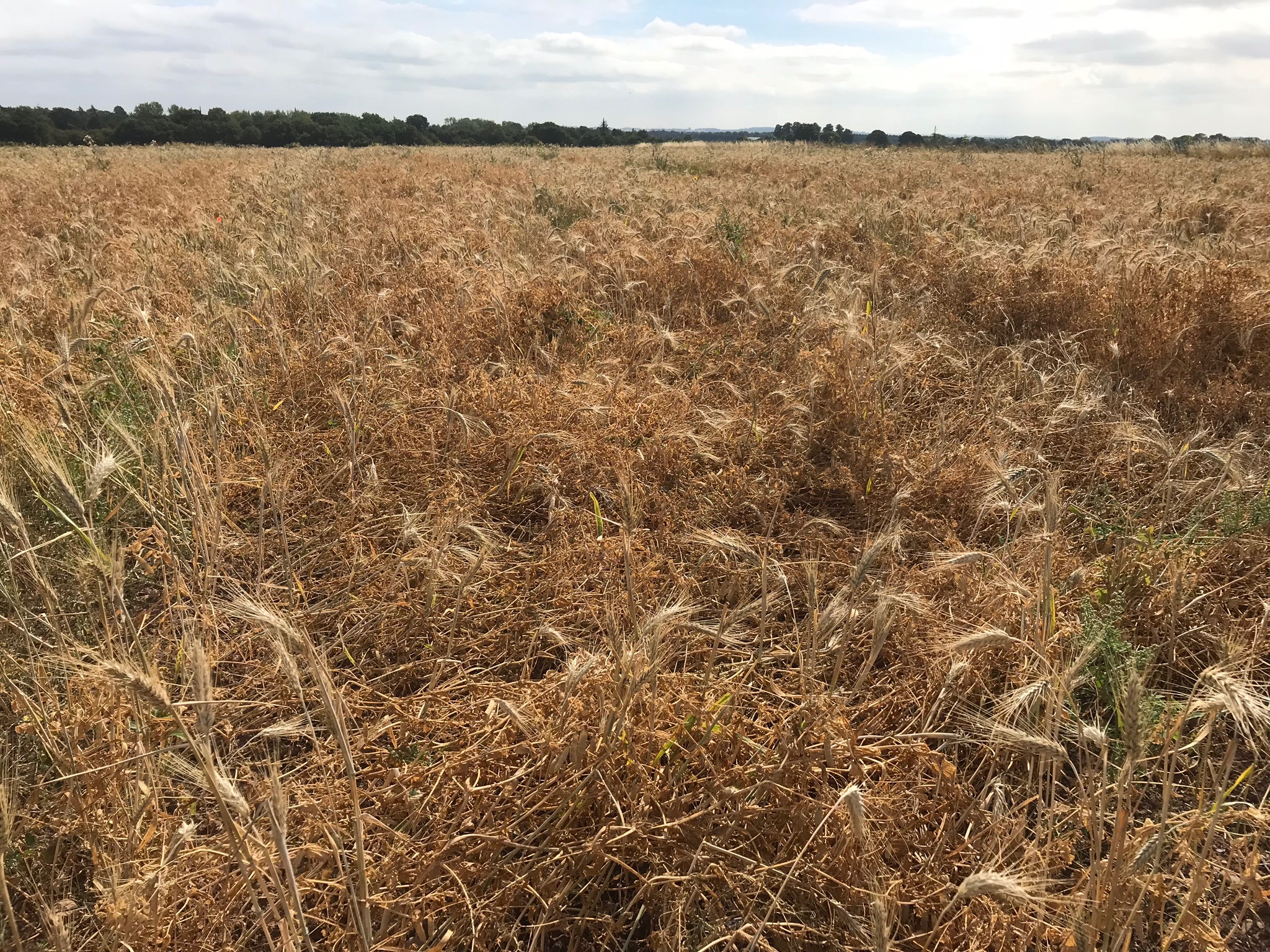


Living mulch
We are doing more and more trials on the farm, the most interesting of these being the ORC living mulch trial – where we are growing a permanent understory (a living mulch of white clover) and direct drilling cereals into it.
We are always looking for ways to improve our soils and using living mulches is particularly aimed at reducing our cultivations and ploughing for the benefit of the soil and also so help interrupt weed lifecycles. We are now into year three and have moved up to full field scale although it’s still a trial in which we are working to overcome the challenges and improve output. Particularly promising is the further extension of the mulch into the next diverse grazing ley where the sheep are now being managed in a more planned way with more paddocks and much more frequent moves. This is showing real benefits for the sheep, the soil, biodiversity and the growth of the lambs.
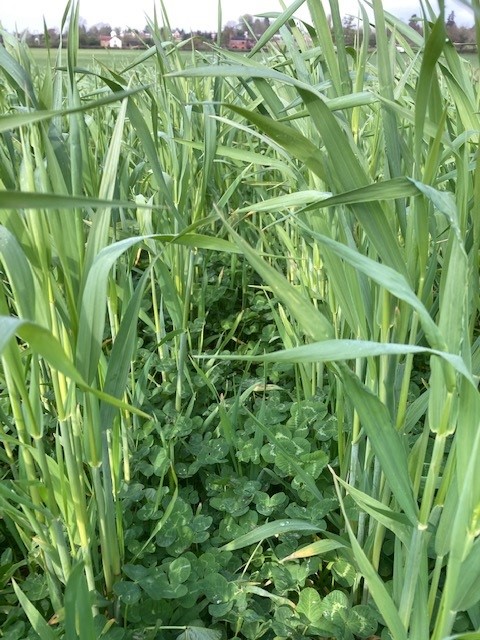
We are exploring more and more ways to improve our soils; using living mulches is particularly aimed at reducing our cultivations, decreasing our heavy cultivations, and ploughing for the benefit of the soil and to also help interrupt weed life cycles. We don’t know whether it’s going to work yet (although it looks quite promising at the moment) and we don’t yet know how much we can extend into the wider farm, it’s still at trial level. However, in farming you only get one chance every year so we have taken the plunge and have now undersown a whole field for next year with living mulch. We hope to increase it and further explore over the next few years. We bought a Simtech direct drill to allow us to experiment further with direct drilling of crops.
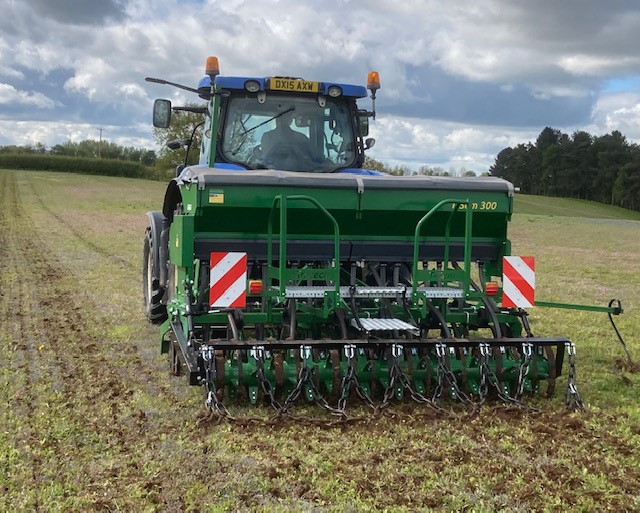
Rotation, livestock and cover crops
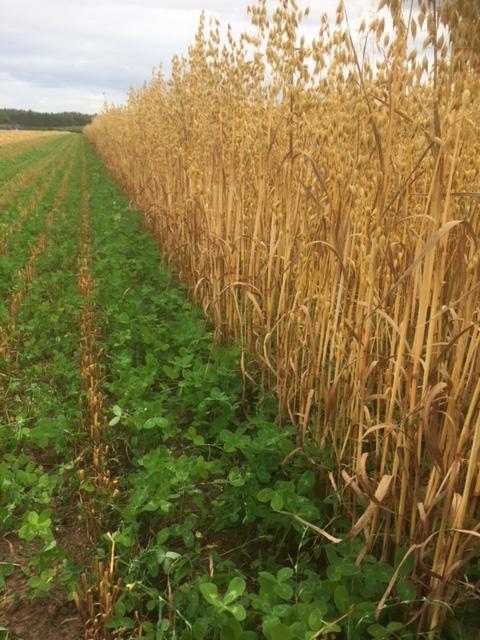
As well as the clover, the sheep graze a mixture of longer-term herbal lays, short-term fertility building leys and cover crops. We’re trying to use them primarily as a management tool for weed control (particularly docks), so try to manage them for the good of the soil and the good of our system. We don’t have much ambition to make large profits out of the sheep but feel they add to the diversity of the business.
We have been growing 1-year leys – undersown so they last for 18 months, and have diversified the mixtures, adding more grass species and clover. We are interested in more diverse mixtures, but as we have a short ley we are not sure we would get the benefit from the deeper rooting species etc. to justify the cost.

We have increased diversity in our cover crop mixtures (see above) and moved from just using brassicas to over 7 or 8 species mix in one field. We have also experimented with adding seed into mixtures (buckwheat and phacelia) to encourage mycorrhizal fungi.
I have realised that you have to accept different levels of diversity – weeds and pests are part of the diversity, as are their enemies! We have more biodiversity on the farm because we don’t spray and weeds and pests are not always the problem we thought they were going to be!
Agroforestry
We are building agroforestry into our system and have planted some trees with assistance from the Woodland Trust. We have planted wide rows with 9 hazels planted inbetween rows of walnut, which are still in the establishment phase. The idea is that the hazel will be cut on a 5-year rotation, with 20% cut each year, to provide wood for our biomass boiler. The rows are running east to west to provide maximum shade and shelter on the north side, where it borders with a field which has a grass ley in rotation. The idea is that it will provide shade (previously for cattle in summer) and shelter for sheep in winter. As the grass ley is coming out, we will harvest from the line on the edge, that way the sheep will have the benefit of the highest line of hazel.
The benefits of agroforestry are multiple – just changing and improving our landscape is quite a big factor for us – we’ve deliberately put the trees in very open ground to change the landscape for the better, providing more trees on-farm.

Last winter we planted a new small woodland with support from The Woodland Trust under their MoreWoods scheme. This has been a great success and has allowed us to engage closely with the local community who came out to help with the planting and are now enjoying the early development of the woodland along with school groups and other visitors. It’s been remarkable how quickly the trees, the flowering understory and the new pond have become established, creating a very special environment in the heart of the farm which we are all enjoying.

Motivations
It is all about diversity! First of all, it makes life more interesting! But we also think that diversity across the farm builds resilience.
We are keen to increase diversity of the crops, the business and the people we work with. Connecting with the people who eat and process our food makes us feel like food producers rather than commodity producers and is much more rewarding!
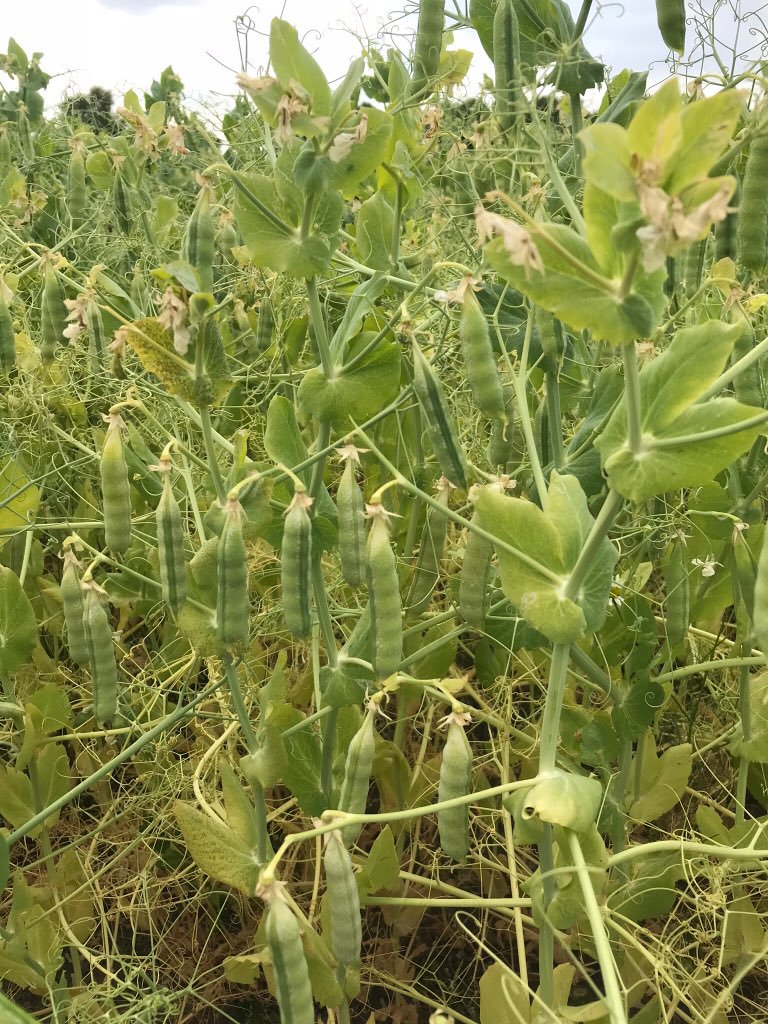
We valued peas in our rotation but felt they were not fairly valued by markets, especially given how difficult they are to grow. Growing yellow (see right), blue and marrow fat and carlin peas for Hodmedod’s not only helped us to maintain a diverse rotation but also helped us build meaningful connections with our customers.
I feel sure that the principles of agroecology are evident throughout our whole business. The way everything fits together has always been a priority and is I think essential in organic farming; we are trying to diversify our marketing, add value, deal with local people, and be kinder to ourselves. The Covid pandemic has forced us to reflect on life and whether it is as we want it to be. In common with many people, we found ourselves in a situation where change was forced on us, so we decided to try and take control of that change and make life a little better if we could. We had deliberately developed a very diverse business which was complicated and personally very demanding. We had been quick to talk about the ‘sustainability’ of our business, it being key, but this last year really highlighted how unsustainable our own input into that business had become.
Farmer tips
- Embrace diversity in every way! It’s a fashionable thing to say, but its true!
- Get closer to your market and become food producer – bakers, millers – they will inspire you, give you new ideas and make life more interesting!
- Don’t be afraid to try things out!
Mark is a key contributor to the UK Grain Lab, a project supported by and co-founded by OF&G. It is a collaborative project where seed breeders, farmers, millers, bakers and chefs all come together to share knowledge and insight to drive better seed and grain development for greater agronomics for low and zero input agriculture while also building flavour and nutrition in grains and end products.
Green Acres Farm hosted the 2018 National Organic Combinable Crops. Videos from the farm walk at NOCC are available on the Agricology YouTube channel (sorry about the wind!)
All photos courtesy of Mark Lea
